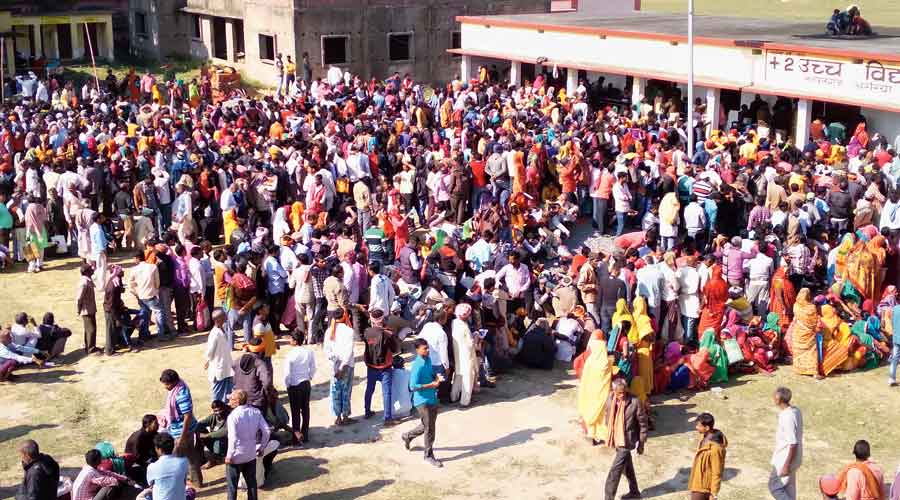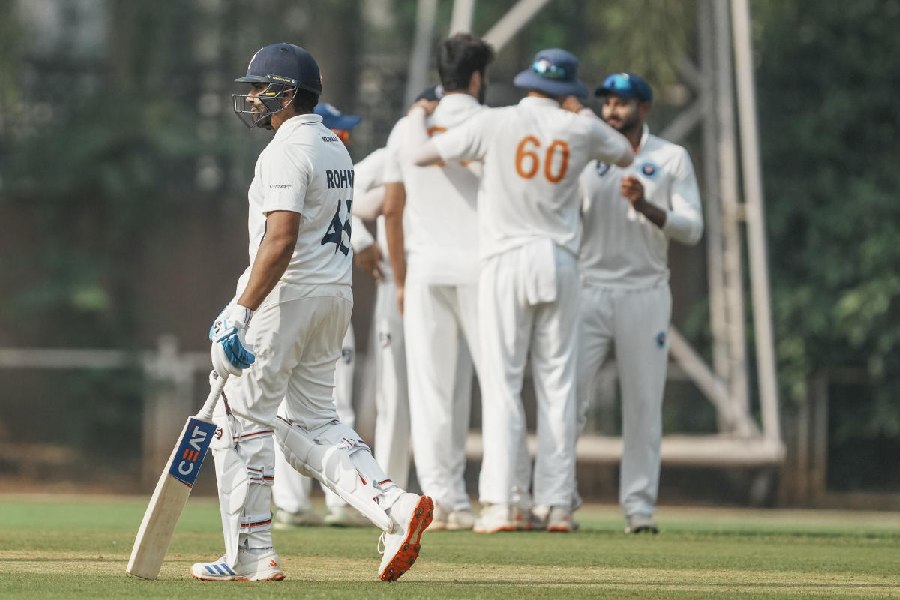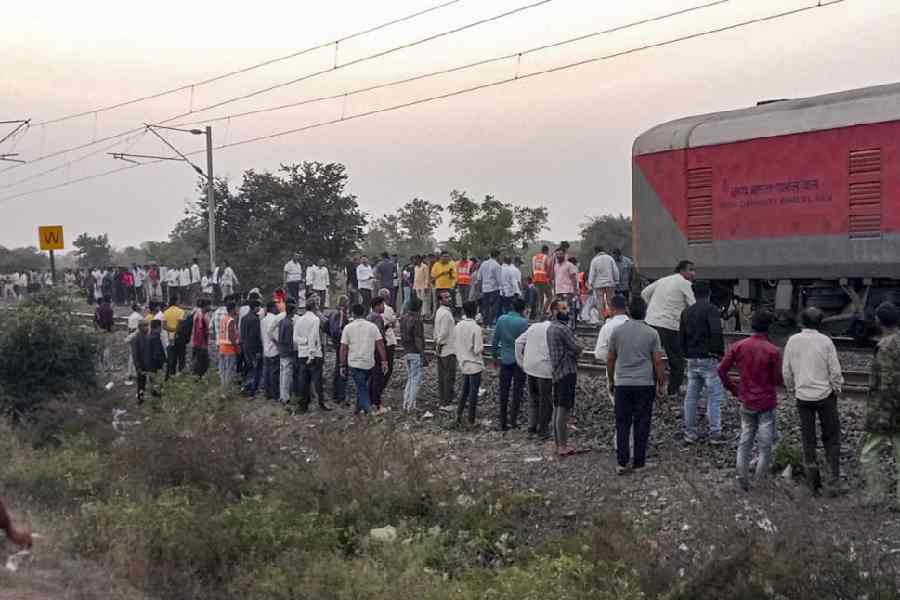The ongoing fertiliser crisis in Bihar took a nasty turn on Thursday when several women were injured in a stampede that occurred among the farmers in Araria district, around 300km from the state capital. The police later fired in the air and lathicharged when they protested the non-availability of fertilisers.
Thousands of farmers, hopeful of purchasing the much needed fertilisers — urea, DAP (Di-Ammonium Phosphate), NPK (Nitrogen-Phosphorus-Potassium) and MOP (Muriate of Potash) — at the onset of the rabi season had gathered since early morning at a government high school at Narpatganj in Araria.
The district administration had organised it.
The surge of the crowd turned into a stampede as soon as the sales started. People fell over each other in an attempt to reach the counters and buy some fertiliser. At least eight women were trampled over and were rushed by others to nearby hospitals.
However, a large number of the farmers were unable to buy fertilisers and they blocked National Highway-57 in protest. The police fired several rounds in the air, lathicharged and dispersed them.
“We provide food to everybody but nobody bothers about us. The entire situation is due to the failure of the government. We are not getting fertilisers at all. This will affect the productivity of rabi crops. Fertilisers are available at double the price in the black market, but we cannot afford to buy,” said Lalit Kumar, a farmer of Narpatganj.
Another farmer Muhammad Ekram said: “We were told that the government would sell fertilisers so we came here. But there was no arrangement by the administration to control the crowd or have a distribution system in place. And whatever fertiliser was distributed, got over in no time. People first got injured in the stampede and were then beaten up by the police.”
Araria district magistrate Prashanth Kumar C.H. accepted that there was “a shortage of fertilisers” and said that the incident happened due to the gathering of “an unprecedented crowd” at the centre where fertiliser distribution was being done.
“Everybody came at the same time. As per our information two women have suffered minor injuries. They are all right now. The fertiliser distribution was done but everybody could not get it. This led to anger and frustration among the people and they blocked the national highway in the area,” Prashanth said.
The district magistrate denied any knowledge of firing by the police to remove the blockade, though by that time video footage of the incident had gone viral on the social media platforms.
Araria is not a one-off incident. Almost similar situation prevails across Bihar, including districts like Aurangabad, Kaimur, Nawada, Lakhisarai, Begusarai, Nawada, Supaul, Saharsa and others.
Farmers either wait overnight outside the fertiliser distribution centres or arrive before dawn to try their luck only to return empty-handed, worrying about the future if the crop yield falls.
The crisis has been continuing for more than a month now. Chief minister Nitish Kumar had reviewed the situation on December 9 and claimed that the state government was talking to the Centre and working at all levels to remove the scarcity of fertilisers. Nitish had also assured that the situation will normalise in a week, but it did not happen.
State agriculture director Rajiv Raushan told The Telegraph: “We are not getting the required amount of fertiliser from the Centre. We have received just around 66 per cent of the allotment of fertilisers for the month of December.”
“The rush is more because farmers need urea while irrigating the rabi crops. We are hoping that the situation will improve in January-February. Rabi irrigation continues till February,” Rajiv added.
Fertiliser data accessed by The Telegraph showed a unique twist that has contributed to the making of the scarcity in Bihar.
The Centre allotted much less than Bihar’s requirement of urea and DAP (the much needed and used fertilisers in the state) in the month of October and November. And when it came to actual receipt of fertilisers, the state got even less than its allotted share leading to the scarcity.
To make amends, the Centre allotted a little more than the state’s requirement of urea and DAP for the month of December, but the actual supply of urea remained much less — just 1.99 lakh tonnes against the allotment of 3.18 lakh tonnes. It added to the crisis.
Attempts by this newspaper to talk to state agriculture minister and senior Bharatiya Janata Party (BJP) leader Amarendra Pratap Singh proved futile. His aide said he was busy in meetings and asked to dial tomorrow.










